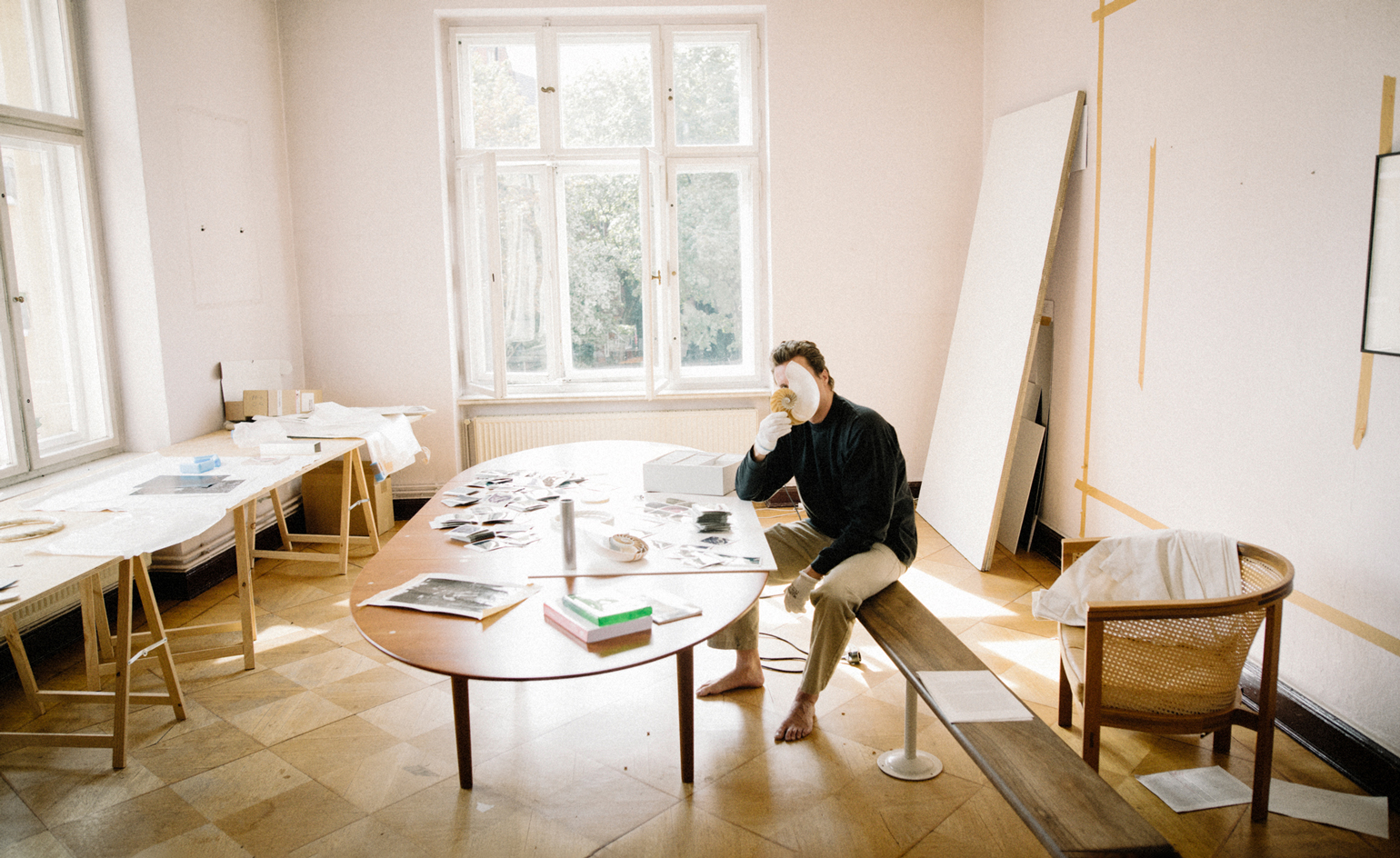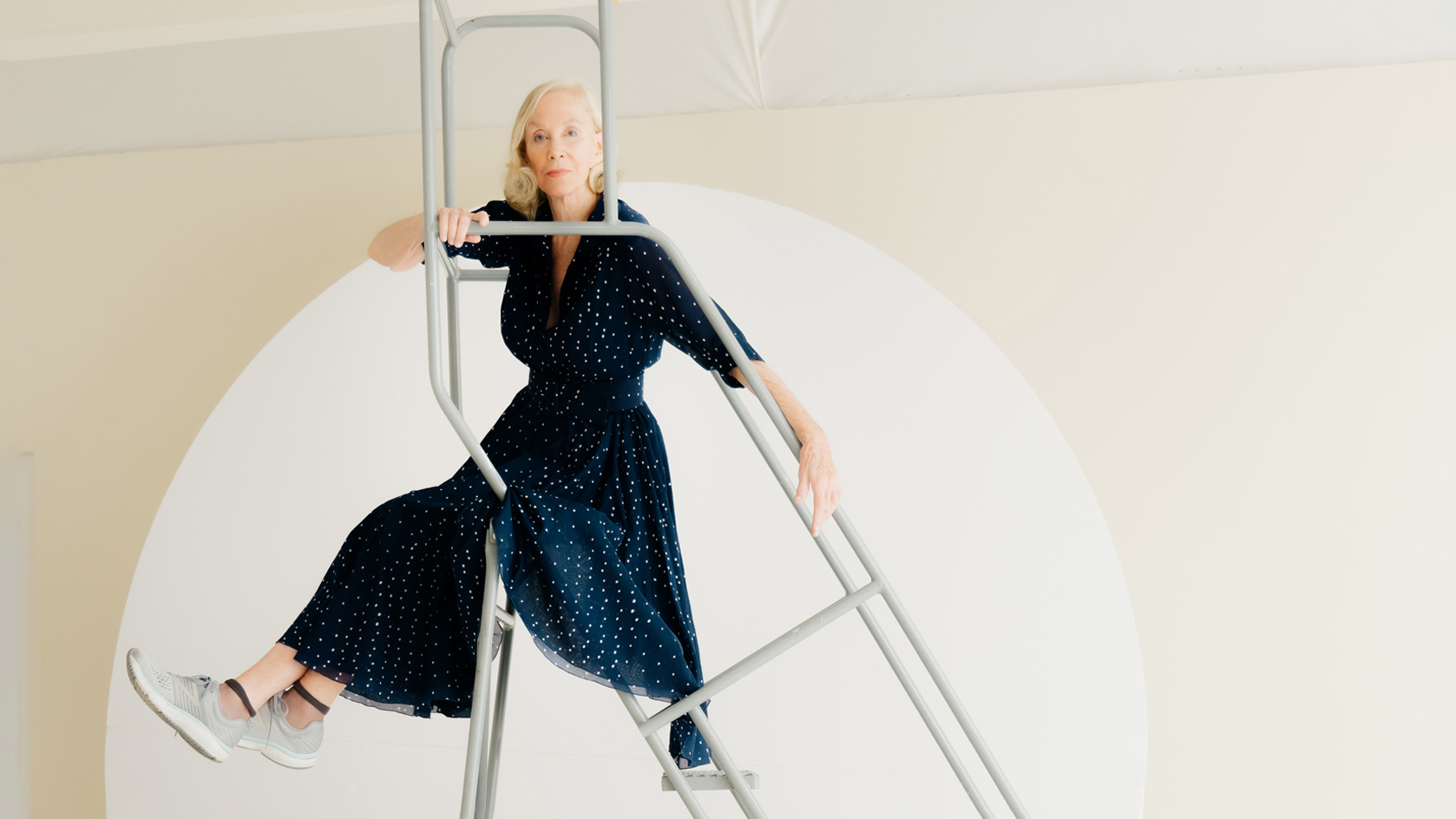Q&A: Anne Hardy

W*: People usually think of photography as an instantaneous snapshot of a moment in time, but your images seem to convey a lot of history. How do you achieve this?
AH: When I create a photograph it is made over a long period of time and the final image captures this history and all that is contained in it. It sort of steeps like tea - I view the work through the camera lens while making it and the photograph reflects that.
There is an almost post-apocalyptic quality to the work of British artist Anne Hardy. In shot after shot, the sense of abandonment – rooms utterly bleached of life, a grungy workout space, hallways stuffed with the detritus of a panicked leave-taking – comes through. It’s as if she’s chanced on an entire city that’s been sacked and pillaged, and she’s decided to meticulously document every corner.
The surprise, of course, is that every claustrophobic scene is, in reality, a set that has been painstakingly constructed over several months, but there is never any hint of artifice. Hardy – who first trained in painting at The Cheltenham School of Fine Art before landing in the Royal College of Arts where she studied photography – shoots with a medium-format camera and wide-angled lens.
In her work, she captures portraits of decay, loss, pain and a wistfulness for what has passed. The lasting impression may be a record of the end of civilization, but in Hardy’s images, you get the unnerving feeling that just out of range of the photograph, someone is still here, still present in the room and silently watching. Her most impressive achievement lies in the slowly dawning realisation that that someone is you.
Hardy recently had a solo exhibition at the Vienna Secession, and was a panelist on 'Truth or Lies? Aesthetic and Documentary Strategies in Contemporary Culture' at Le Méridien, Vienna. The discussion took place on 18 September and was organised by Le Méridien Hotels & Resorts and Outset Contemporary Art Fund as part of the Outset Le Méridien Talk Series.
Wallpaper*: The scenes you create look like they have been lived-in and the contents evolved over a long time. Do you know exactly what the image will look like before you start?
Anne Hardy: I bring a place into being, imaginatively and physically by using the suggestive qualities of the various materials and objects that I work with. When I begin a new piece of work I set myself parameters to work within and the place and image that I make emerge out of a process of experimenting and testing of materials. There is a tussle between myself and the 'stuff' that I work with, and the camera creates an arena for this to happen in.
W*: There are no people in your images, although the scenes often depict a lived-in feel. Can you explain why you don't show the people but just hint at their existence?
AH: The images are about space, and your encounter with a space, and its presence via the image and your imagination. It's not necessary to include people.
W*: Many of your photographs have a painted quality; can you explain how you manipulate your images to give this effect?
AH: If your question is to do with Photoshop or digital manipulation of the images, there is none. I work with conventional photographic negative and printing and the analogue approach and lack of post-production is important to me. I am interested in the fragility of the image and of the illusion, both literally (the structures are themselves fragile) and conceptually, so it's important to me that everything that appears in the image actually happens in front of the camera.
W*: The subjects of your photographs take a lot of constructing; do you see yourself as a photographer first, or as a sculptor?
AH: I am probably a sculptor who creates something that in the end is photographic and is also informed by painting, which is what I studied first.
W*: Your work is only ever shown as a photograph, and not an installation. What is the reason for this?
AH: Until now that has been the case. I am interested in how we relate to the world around us via our imagination. We think that we know many things about the world we are part of but very few of these come via our own direct experience and so I have been interested to find a photographic equivalent to a literary space, one that allows an encounter and exploration of space that has a relationship to what we think of as real or potentially real but at the same time is a fiction.
W*: A lot of the images you create have a dreamlike quality, where does your inspiration come from?
AH: Particular architectural forms or objects have all formed starting points for pieces of work, as have ordering and classification systems. The structures I build reference informal forms of architecture, in particular the accumulative and adaptive architecture found in a densely-built city.
Literature is also an important reference and the artist book accompanying my exhibition at the Secession contains excerpts from novels by Haruki Murakami, Stanisław Lem, Raymond Carver, Bret Easton Ellis and Tom McCarthy, and the first chapter from JG Ballard's novel Concrete Island. This describes the moment when the protagonist leaves his normal world and enters a parallel one - he becomes invisible. This is the kind of space I am fascinated with in my work. It is just there, next to you, and you don't see it. It is, perhaps, the kind of space you might imagine exists.
See Anne Hardy's solo exhibiton at the Vienna Secession here
Wallpaper* Newsletter
Receive our daily digest of inspiration, escapism and design stories from around the world direct to your inbox.

'Cipher', 2007. Image courtesy Maureen Paley, London

'Rehearsal', 2010. Image courtesy Maureen Paley, London

'Rift', 2011. Image courtesy Maureen Paley, London

'Suite', 2012. Image courtesy Maureen Paley, London
-
 In Wales, Michelin-starred Gorse celebrates the country’s abundant larder
In Wales, Michelin-starred Gorse celebrates the country’s abundant larderGorse is the first Michelin-starred restaurant in Cardiff, putting Welsh cuisine on the map. We speak with chef and founder Tom Waters about the importance of keeping culinary traditions alive
By Tianna Williams
-
 Ludmilla Balkis’ organic, earthy ceramics embody the Basque countryside
Ludmilla Balkis’ organic, earthy ceramics embody the Basque countrysideThe sculptor-ceramicist presents a series inspired by and created from found natural objects in a New York exhibition
By Anna Solomon
-
 At this secret NYC hangout, the drinks are strong and the vibes are stronger
At this secret NYC hangout, the drinks are strong and the vibes are strongerFor People's bar, Workstead serves up a good time
By Anna Fixsen
-
 Cyprien Gaillard on chaos, reorder and excavating a Paris in flux
Cyprien Gaillard on chaos, reorder and excavating a Paris in fluxWe interviewed French artist Cyprien Gaillard ahead of his major two-part show, ‘Humpty \ Dumpty’ at Palais de Tokyo and Lafayette Anticipations (until 8 January 2023). Through abandoned clocks, love locks and asbestos, he dissects the human obsession with structural restoration
By Harriet Lloyd-Smith
-
 Year in review: top 10 art interviews of 2022, chosen by Wallpaper* arts editor Harriet Lloyd-Smith
Year in review: top 10 art interviews of 2022, chosen by Wallpaper* arts editor Harriet Lloyd-SmithTop 10 art interviews of 2022, as selected by Wallpaper* arts editor Harriet Lloyd-Smith, summing up another dramatic year in the art world
By Harriet Lloyd-Smith
-
 Yayoi Kusama on love, hope and the power of art
Yayoi Kusama on love, hope and the power of artThere’s still time to see Yayoi Kusama’s major retrospective at M+, Hong Kong (until 14 May). In our interview, the legendary Japanese artist vows to continue to ‘create art to leave the message of “love forever”’
By Megan C Hills
-
 Antony Gormley interview: ‘We’re at more than a tipping point. We’re in a moment of utter crisis’
Antony Gormley interview: ‘We’re at more than a tipping point. We’re in a moment of utter crisis’We visit the London studio of British sculptor Antony Gormley ahead of his major new show ‘Body Field’ at Xavier Hufkens Brussels
By Harriet Lloyd-Smith
-
 Photographer Maisie Cousins on nostalgia, impulsive making and ‘collecting useless things’
Photographer Maisie Cousins on nostalgia, impulsive making and ‘collecting useless things’Explore the vision of British artist Maisie Cousins in ‘Through the lens’, our monthly series spotlighting photographers who are Wallpaper* contributors
By Sophie Gladstone
-
 Rashid Johnson in Menorca: a journey through migration, longing and togetherness
Rashid Johnson in Menorca: a journey through migration, longing and togethernessWe visited Rashid Johnson’s Brooklyn studio ahead of the artist’s show at Hauser & Wirth Menorca, which contemplates drift – physical and emotional
By Osman Can Yerebakan
-
 Step inside the kaleidoscopic universe of Pipilotti Rist
Step inside the kaleidoscopic universe of Pipilotti RistSwiss artist Pipilotti Rist, who headlines Wallpaper’s November 2022 issue, has transformed the way we see, with a poetic yet playful practice spanning three decades. Here, and in a special portfolio, she reveals how she has liberated video art from its conventions, imbued the digital realm with emotion, animated public spaces, and harnessed the healing powers of colour
By Jessica Klingelfuss
-
 Gathering: the new Soho gallery blending art and social activism
Gathering: the new Soho gallery blending art and social activismGathering, the newest gallery resident in London’s Soho, will focus on contemporary art exploring systemic social issues. Ahead of Tai Shani’s inaugural show, we speak to founders Alex Flick and Trinidad Fombella about their vision for the gallery
By Harriet Lloyd-Smith